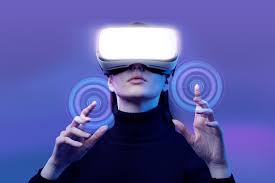
VR and motion sensing in gaming

The Impact of VR and Motion Sensing on Gaming
The gaming industry is undergoing a significant transformation thanks to VR and motion sensing in gaming. These innovations promise to take players deeper into virtual worlds than ever before. With advancements in technology, immersive gaming experiences are becoming a reality. But will these developments finally revolutionize gaming?
VR: A New Era in Gaming Immersion
Virtual reality is one of the most exciting innovations in the gaming world. By using VR and motion sensing technology, players can fully immerse themselves in their favorite games. Instead of simply watching a screen, players experience the game world from within, interacting with the environment as if they were truly there.
Companies like Oculus, HTC, and Sony have made VR technology more accessible to gamers. The headsets allow players to enter a 3D world and engage with it through head movements and controllers. As the technology improves, the experience becomes even more lifelike, with better graphics and more responsive controls.
Motion Sensing Technology: Adding Physical Interaction
In addition to VR, motion sensing in gaming plays a crucial role in creating a fully interactive gaming environment. Technologies like the Nintendo Wii, PlayStation Move, and Xbox Kinect have already introduced motion-based gaming. These devices track the player’s physical movements, allowing them to interact with the game using their body.
When combined with VR, motion sensing enhances immersion by letting players move, swing, or jump inside the game world. This blend of technologies provides a more engaging experience than traditional controller-based gaming, offering greater physical interaction with the game world.
Challenges to the Widespread Adoption of VR and Motion Sensing
Despite the promise of VR , several challenges remain. One major barrier is the cost. High-quality VR headsets and motion sensors can be expensive, making them less accessible for many gamers. While prices have come down over the years, premium devices still come with a hefty price tag.
Another issue is physical discomfort. Prolonged use of VR headsets can cause motion sickness or eye strain. Although improvements have been made to reduce these issues, they still pose challenges for many users.
Moreover, the limited library of games that fully utilize technology is another obstacle. Developers need to create more content that can take full advantage of these immersive technologies. Until that happens, the potential for widespread adoption remains limited.
The Future of Gaming: VR and Motion Sensing
Looking forward, VR and motion sensing in gaming have the potential to reshape the industry. With better hardware, more content, and reduced costs, these technologies could become mainstream in the coming years. Companies are already investing heavily in VR and AR, signaling a shift towards a more immersive gaming future.
The upcoming rollout of 5G networks could also make online VR gaming more accessible by providing faster, more stable internet connections. As these technologies evolve, it’s likely that VR and motion sensing will become integral to the gaming experience, offering new levels of interactivity and immersion.
Conclusion: Will VR and Motion Sensing Define the Future of Gaming?
In conclusion, VR and motion sensing are set to play a pivotal role in the future of gaming. While challenges like cost and content availability still need to be addressed, the technology’s potential is immense. As VR and motion sensing continue to improve, they could redefine how we play games and how deeply we can immerse ourselves in virtual worlds.
The path to mass adoption may take time, but the future of gaming certainly seems poised for a revolution.


